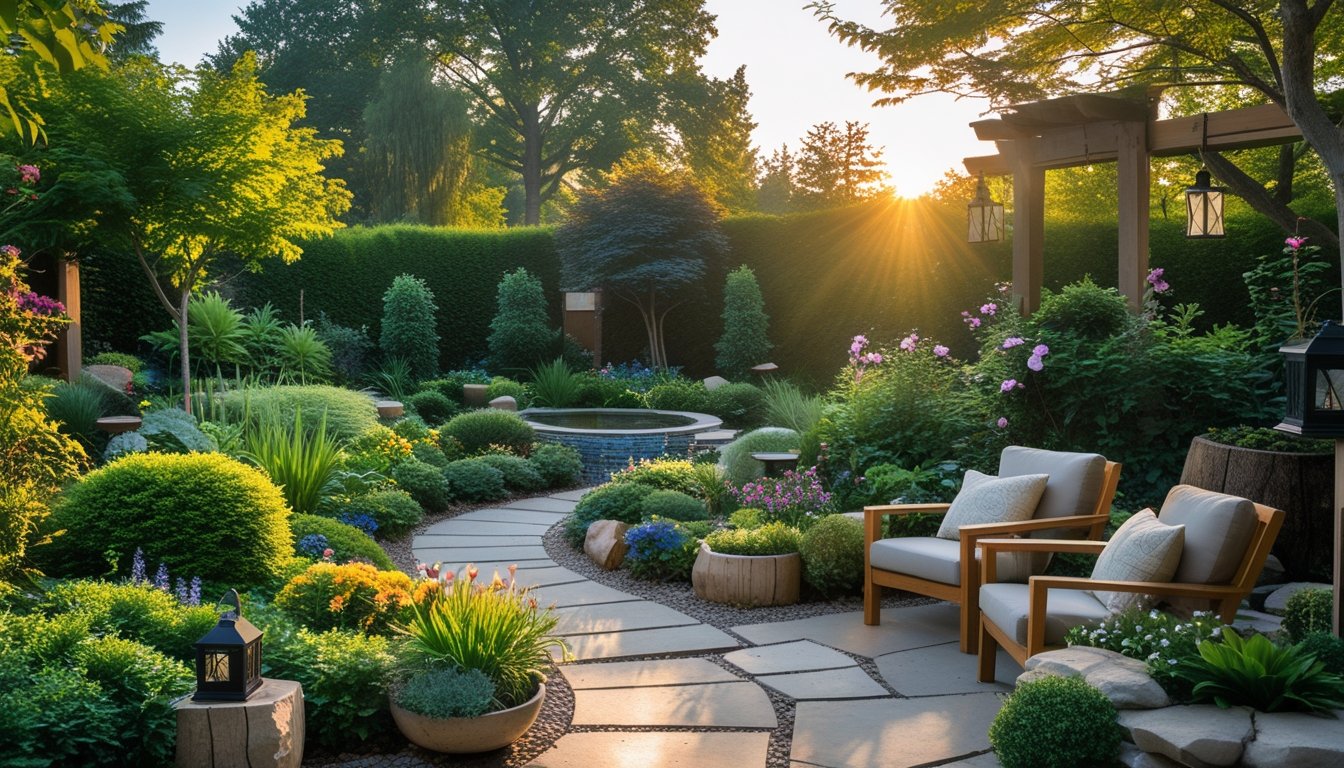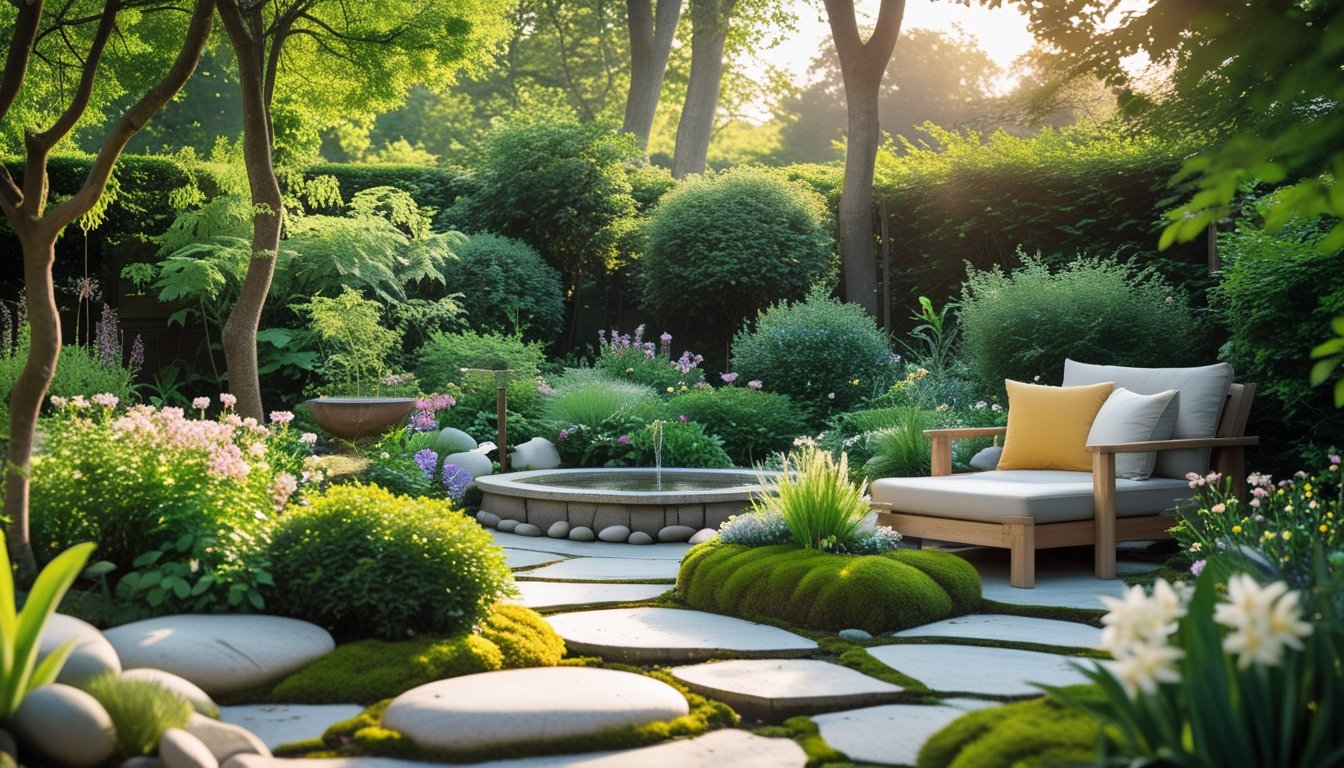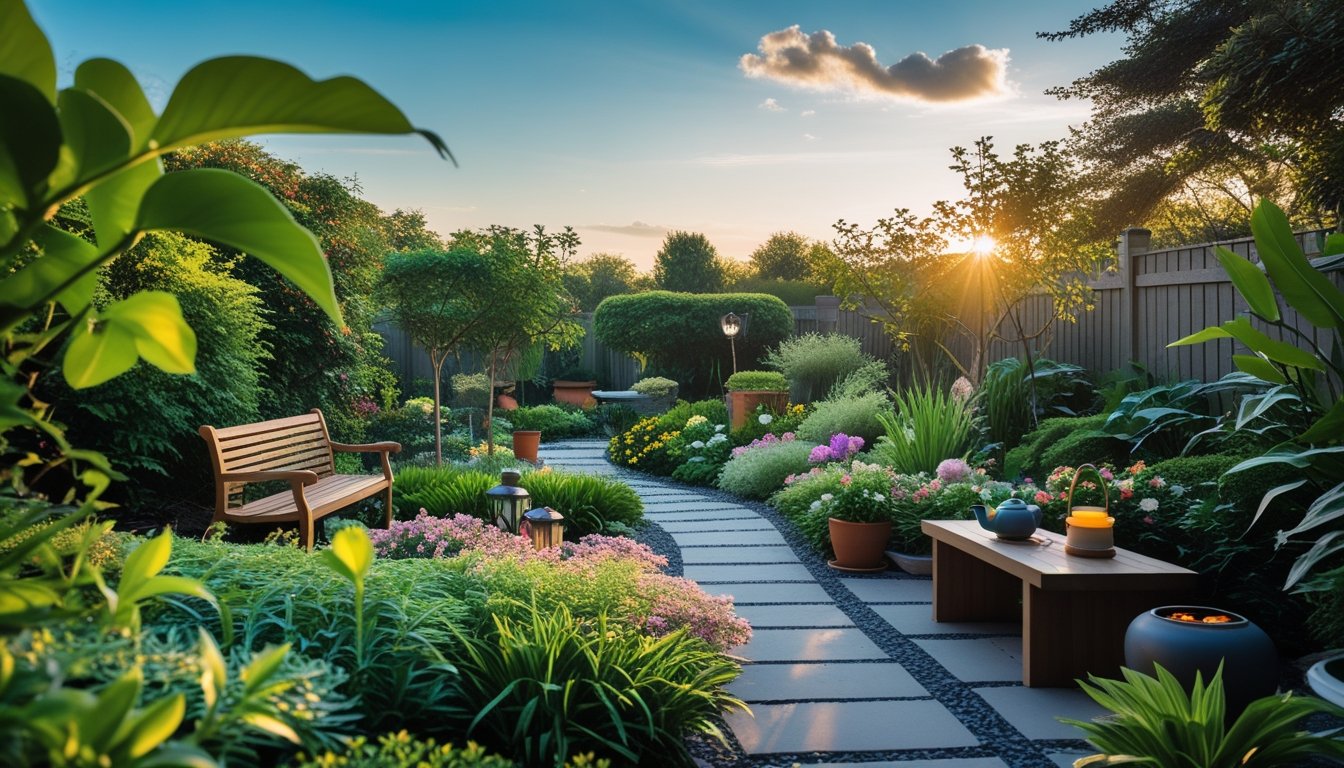Late updated: 28 Jul 2025 10:07
Written by: James Whitaker
Creating The Perfect Outdoor Garden Sanctuary: Expert Tips for Your Space
Crafting an outdoor garden sanctuary is a journey that blends creativity, tranquillity, and a touch of nature's wonder. This personal retreat serves not only as an extension of our living spaces but as a haven to escape the hustle and bustle of daily life. Transform your backyard into a relaxing oasis where you can unwind and connect with nature.

The key to designing the perfect sanctuary lies in understanding your space's potential. Whether you have a sprawling garden or a cosy patio, making thoughtful choices about furniture, plants, and decorative elements can enhance the calming ambience. By including a mix of seating options, natural elements like water features, and a palette of soothing colours, we can create an inviting atmosphere that rejuvenates the mind and body.
Our outdoor space should cater to all senses, creating a multi-sensory experience that promotes relaxation. Imagine the gentle sound of a fountain, the fragrance of blooming flowers, and a snug seating area under a pergola. These elements, when harmonised, can transform any outdoor area into a sanctuary that offers solace and rejuvenation.
Key Takeaways
- Design an outdoor retreat that suits your space and lifestyle.
- Integrate natural elements and soothing colours.
- Enhance the space with multi-sensory features.
Designing The Perfect Outdoor Garden Sanctuary
Creating the perfect outdoor garden sanctuary requires thoughtful consideration and intention. By analysing your space, choosing a design theme, incorporating water features, and integrating natural elements, we can transform any garden into a tranquil refuge.
Understanding Your Outdoor Space
Before embarking on design, it is essential to assess the existing features of your outdoor spaces. This evaluation involves identifying the strengths and weaknesses of the landscape. Are there large trees providing shade, or does the space bask in abundant sunlight?
Knowing the characteristics of the garden will guide the selection of plants and features that best suit the environment. It's important to measure the area and understand the soil type, drainage, and orientation relative to the sun. By gathering this information, we can develop a tailored plan that maximises the unique qualities of the outdoor space and addresses any challenges it may present.
Choosing A Design Theme
Selecting a coherent design theme can unify the elements of the garden sanctuary. Design choices might include a Mediterranean ambiance, filled with terracotta pots and drought-resistant plants, or an Asian-inspired retreat with bamboo and minimalist aesthetics.
A sense of purpose shapes the sanctuary's atmosphere, whether it be for meditation, relaxation, or hosting social gatherings. The theme should reflect personal tastes and the intended use of the garden. Incorporating elements such as furniture, lighting, and decor can further enhance the style and feel.
Integrating Water Features
Water features add a serene and calming dimension to any garden sanctuary. Options range from a small bubbling fountain to a full-size waterfall. Integrating these features requires careful planning regarding space, water access, and maintenance needs.
A well-positioned koi pond can become a focal point, attracting wildlife and providing a peaceful visual. It's crucial to consider the sound levels of running water to ensure they enhance rather than disrupt the desired tranquillity. The presence of water can also aid in cooling the environment, making the space more comfortable during warmer months.
Incorporating Natural Elements
Natural elements are indispensable to crafting a harmonious outdoor oasis. Selecting a variety of plants with different heights, textures, and colours enriches the garden's visual interest. Native plants are often a wise choice for their resilience to local climate conditions.
Incorporating natural materials like wood, stone, or gravel can create pathways that guide visitors through the sanctuary, encouraging exploration and relaxation. Additionally, utilising organic mulch not only supports soil health but adds to the natural aesthetic. By thoughtfully integrating these elements, we ensure the garden sanctuary resonates with nature and offers a peaceful retreat.
Key Features And Enhancements For A Tranquil Retreat

Designing a peaceful outdoor garden sanctuary requires integrating key elements that foster relaxation and beauty. Our focus is on creating inviting patios, utilising ambient lighting, selecting serene plants, and adding decorative structures. Each component plays a pivotal role in transforming a simple garden into a soothing retreat.
Creating Inviting Patios And Covered Spaces
A well-designed patio serves as the cornerstone of a tranquil garden. Covered patios and pergolas provide inviting spaces to shelter us from the sun while enjoying nature.
Opting for durable materials such as stone or wood ensures longevity and enhances aesthetic appeal. Comfortable seating, perhaps with cushioned chairs, adds to the ambience, making it a perfect spot for a cosy chat or solitary reflection.
To utilise the space throughout the year, consider installing a fire pit, adding warmth on cooler nights. Natural elements, like a wooden trellis, can also support hanging baskets, bringing greenery and floral accents into the immediate vicinity. This interplay of structure and nature creates a harmonious environment, ideal for relaxation.
Using Lighting To Set The Ambience
The right lighting transforms our garden into a spirited nocturnal sanctuary. String lights draped around a pergola or along garden paths create a soft, inviting glow that beckons relaxation.
To enhance this effect, use lanterns placed strategically around the patio or hidden among plants to add layers of light and shadow. These subtle illuminations cultivate an intimate atmosphere perfect for evening gatherings. Solar energy options can make these lighting choices sustainable and environmentally friendly.
For a segmented look, consider combining multiple light sources. Fairy lights, when paired with stronger lights, help define separate areas. This division of space allows us to create a rich, varied landscape, providing many facets to explore within our garden retreat.
Selecting Plants And Shrubs For Serenity
Plants play a crucial role in establishing tranquillity. Choosing native plants ensures they thrive with minimal effort and align with local ecosystems. Shrubs offer privacy, acting as natural screens from the outside world.
To attract wildlife, include herbs and flowers that lure butterflies, adding a serene vibrancy to our space. Zen gardens, with their sparse design and focus on clean lines, emphasise simplicity and stillness.
Incorporating a balance of textures and colours enriches the sensory experience. Consider plants that offer varied fragrances and seasonal changes, so there’s always something new to appreciate. This thoughtful selection of flora complements both the aesthetic and functional goals of our tranquil haven.
Adding Decorative Structures And Accessories
Decorative structures bridge functionality and beauty. A trellis can provide support for climbing plants and define areas within the garden, encouraging exploration.
We can personalise our space with accessories like water features or sculptures. These additions create focal points and draw attention to specific areas, encouraging relaxation and meditation.
In harmony with natural settings, these elements should blend rather than dominate. Stylish pots for plants, weather-resistant textiles for throws or cushions, and the use of natural materials all contribute to a cohesive, peaceful retreat. Careful placement of these features ensures they enhance rather than overwhelm, underpinning the sanctuary's tranquil core.
Frequently Asked Questions

Creating a garden sanctuary involves incorporating essential elements, attracting wildlife, and selecting appropriate plants for privacy. Lighting and budget-friendly features play crucial roles in enhancing tranquillity. Sensory elements enrich the experience.
What are the essential elements for creating a tranquil garden sanctuary?
To create a tranquil garden sanctuary, we need to focus on elements such as comfortable seating, soothing water features, and a range of plants. Incorporating a variety of textures and colours can further enhance the overall atmosphere, providing a peaceful and inviting space to unwind.
How can one attract wildlife to a backyard sanctuary?
Attracting wildlife involves providing natural habitats, such as birdhouses and native plants. By including water sources like birdbaths, we encourage visits from birds and other creatures. Native plants not only support local ecosystems but also offer food and shelter to various species, enriching our garden's biodiversity.
What are the best plants to use for privacy and serenity in a garden sanctuary?
For privacy and serenity, we can choose plants like bamboo, evergreens, and ornamental grasses. These provide effective screening while maintaining a peaceful environment. Using a combination of heights and textures adds visual interest while ensuring our sanctuary remains a quiet retreat.
How can lighting be used to enhance the ambiance of an outdoor sanctuary?
Strategically placed lighting enhances the ambiance of a garden sanctuary. Using solar lights, lanterns, or string lights, we can create a warm and inviting atmosphere. Soft, diffused lighting highlights focal points while ensuring pathways are safely illuminated, extending the usability of our garden into the evening.
What budget-friendly features can be added to an outdoor garden to increase its tranquillity?
Incorporating budget-friendly features like DIY bird feeders or recycled materials for planters can boost tranquillity. Simple water features, such as small fountains or ponds, provide soothing sounds without significant expense. By repurposing items creatively, we can enhance our garden's peace and aesthetics.
How can one create a sensory experience in their garden sanctuary?
A sensory experience involves engaging all senses: sight, sound, smell, touch, and taste. Incorporating fragrant plants, like lavender or herbs, adds delightful aromas. We can use textured paths and varied foliage for tactile interest, while edible plants encourage taste exploration, enriching our sensory connection with the garden sanctuary.
